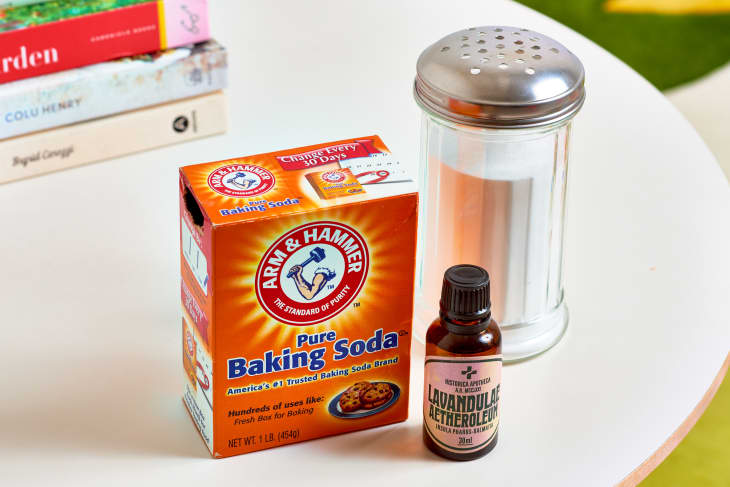4 Things You Should Never Clean with Baking Soda

From scrubbing pots and pans to deep-cleaning appliances, baking soda is such a great cleaning agent that it’s tempting to want to use it on everything. But even though it’s gentler than some alternatives, baking soda still has some downfalls.
Because it’s abrasive, you have to be careful with surfaces that are lightly sealed or that have a finish that can be worn away (the same way you would be careful with scrubbing too hard with a scratchy sponge). And some metals are more reactive than others, so baking soda can cause discoloration. While it doesn’t totally ruin the metal, it’s certainly unsightly.
The other thing to be careful of with baking soda is combining it with something acidic, like vinegar or lemon juice. As the chemicals combine with that satisfying fizz, they form a gas. If you combine them in a sealed container, like a soda bottle, it could potentially explode and harm you. So if you want to use them in combination, do it right before you clean instead of trying to store up a solution.
That being said, in all my research, I could only find a few things to avoid cleaning with baking soda altogether. Here’s the short list.
1. Aluminum cookware
While you can give many metal surfaces a scrub with baking soda, use caution if you’re cleaning aluminum cookware. If you use it quickly and rinse it off, you might be fine, but allowing a baking soda mixture to sit on the surface for too long can cause it to oxidize, which means that the surface changes color.
2. Antique silver
Although using baking soda and aluminum foil can quickly remove tarnish from silverware, some dealers caution against using it on antique silver, as it can be too abrasive and ruin the finish (especially if you’re unsure of the provenance and it’s possible that the pieces are not actually sterling silver). And definitely don’t use it on any serving pieces that have decorative insets like turquoise or pearls. If something is truly precious, take it to a professional.
3. Gold-plated serving pieces
Okay, it’s unlikely that many of your big serving pieces are actually plated with 24k gold — most likely it’s brass or a gold alloy — but if you have wedding china with a gold rim or serving pieces with true gold accents, take care with baking soda. Because gold is a soft metal, it is easily scratched even with a light abrasive like baking soda.
4. Marble surfaces
Although I’ve read some recommendations out there to use baking soda to clean marble, stone manufacturers don’t recommend it. Even though baking soda is only mildly abrasive, repeated applications can wear away at the sealant. Best to stick to designated marble cleaners.
What about you — have you ever had a bad experience cleaning with baking soda?
This post originally ran on Kitchn. See it there: 4 Things You Should Never Clean with Baking Soda